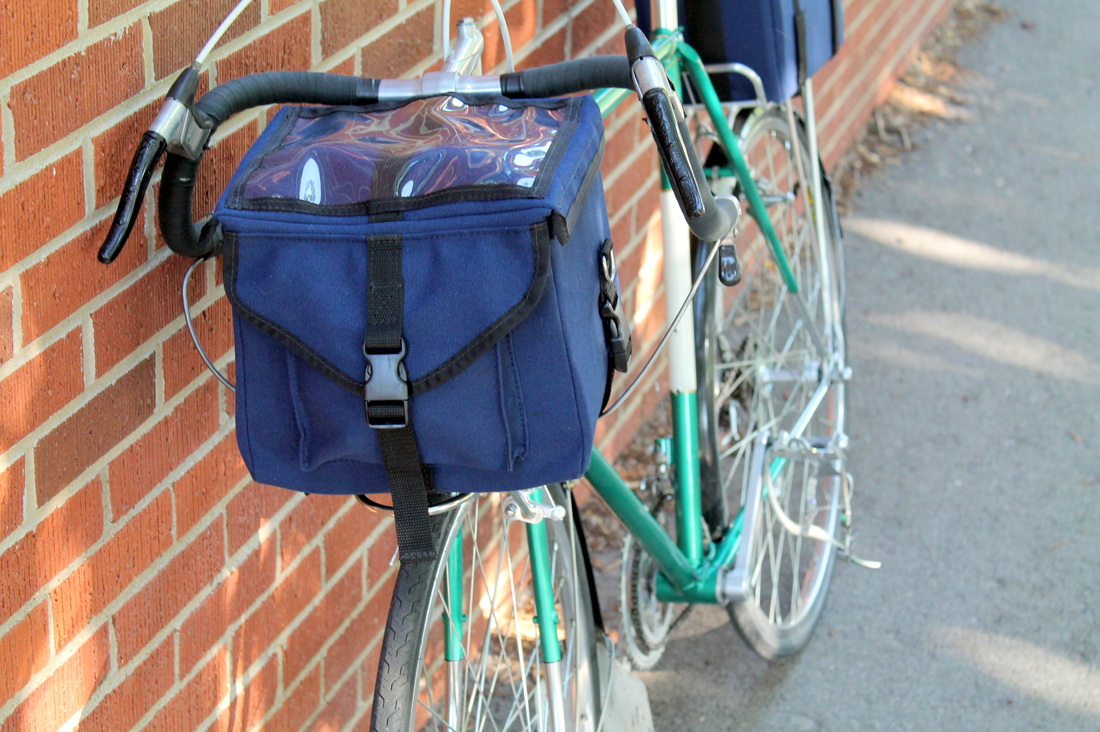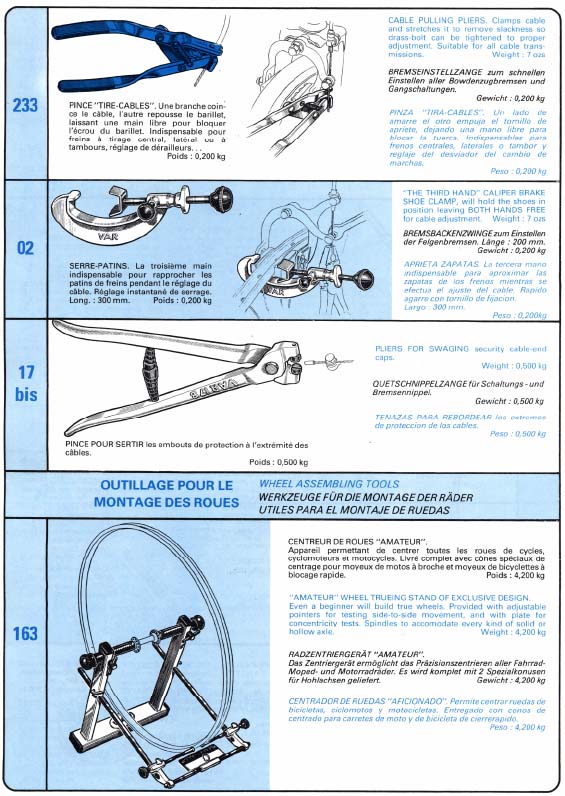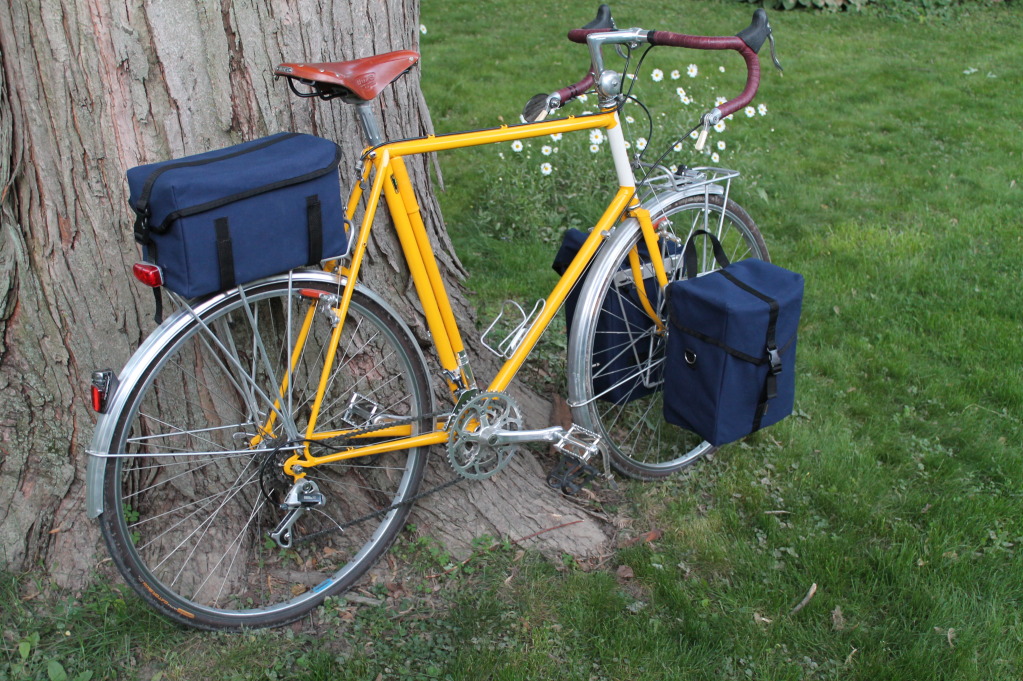|
Here are a few pictures of the Ironweed randonneur bag prototype. There are still a few things to tweak. For starters, the snaps on the pockets are placeholders until we can finalize the hardware for pocket closure. The front pocket will also be larger.
2 Comments
We have some really interesting tools down at the Iowa City Bike Library. The most interesting were donated by an ex-shop owner. Included in his generous gift are several old Var tools that are really intriguing. Var is a French tool maker and probably the oldest company to make tools specifically for bicycle repair.
Last week, while doing my volunteer duty and repairing the brakes on an old ten speed, I grabbed the Var #02 third hand tool. A third hand tool allows you to clamp the brake pads down on the rim thus freeing up your “two” hands to pull the brake cable and remove the slack. Until this Var third hand tool showed up, I had always used the spring style third hand tool. They work fine but can be a little awkward. Not so for the Var tool. It has a nice and weighty cast body and makes clamping down the pads for cable adjustment a quick and silky smooth process. The trunk bag prototype is done! Looks and works great if I say so myself. I put it through its paces last night at a Bike to Work event. It is still too early to decide about making changes to the design. I have to try it on different racks and various sized bicycles, etc. Although, my initial thought is to bring lip of the lid down a couple of centimeters. Next up is another front bag prototype which should be done directly. After that comes a large bag for a porteur rack.
This is fun in a bike-nerd kinda way. For your enjoyment, a 1945 industrial film on the manufacturing of Raleigh bicycles. There was little importing of components at Raleigh in 1945, most things were produced from raw materials in their Nottingham factory. By 1949, Raleigh was manufacturing 750,000 bicycles per year and most of those were for export. While I'm on the subject of Raleighs in the movies, there's another commercial film that features the famous British cycle manufacturing icon. Saturday Night and Sunday Morning is a 1960 movie starring Albert Finney as a disaffected youth on the prowl and working as a machinist in Raleigh's Nottingham factory. The film is dreary and the only thing that I can remember about it are the shots of the factory and the bicycles. Finney's character turns crank spindles on a lathe and rides a beautiful Raleigh 10 speed with a Benelux derailleur and Bluemel mudguards. In the fall of 2002, I was working on a beautiful old green Raleigh Sports for a friend – installing a rack and hooking up a dynamo light system. Once the work was finished, I figured I should take it out for a test ride.
The frame was a little too small for me so the cockpit was snug. To boot, I was suffering from muscle soreness in my lower back and was moving about rather gingerly. Thus, as I stood over the bike I worried about getting on and off. Just the thought of mounting, riding and dismounting the steel beast was making my back ache. However, much to my surprise, I discovered that climbing onto the saddle was painless. The North Road bars coupled with the short top tube allowed me to support my weight with my arms and took the strain off my back. If I wanted, I could get my elbows under my shoulders, which felt comfortable and stable. Later that day, when describing the riding experience to the owner of the Raleigh, I jokingly likened it to using a walker. Joke or not, shortly thereafter I went to my neighborhood bike shop and purchased a set of Nitto Priest bars. The Priest bars are very similar to Nitto’s current North Road style offering, the Albatross. I’ve used the same Priest bars on all my daily commuter/townie incarnations ever since. Although, I'm still a committed drop-bar guy for road and touring. One important part of the swept back style handlebar, and the main point of this post, is the hand position. It’s very natural and comfortable. Try this: Stand up and let your arms hang at your sides and completely relax. Look at the position of your hands. If you're like most, your hands are in a position that matches well with the grip area of some swept back bars - around 70-75 degrees. Good examples include the previously mentioned Nitto Albatross, Soma Oxford, Civia Aldrich, and VO’s Porteurs. These bars and others like them, provide the best angle, in my estimation. Of course there are other variables to consider; such as the width of the bars. But I find that to be less of a consideration for me. I am comfortable on both wide and narrow bars, so long as the hand position is right. I also prefer the ends of the bars to be tipped down at around a 10-15 degree angle and to be roughly the same as the saddle height - maybe a little lower, actually. And I like bars that have minimal rise or drop. Of course, mixing long reach swept back bars with a short reach stem can obliterate the hand position benefits. For instance, if you take a set of Nitto Promenade handlebars and attach them to a short reach stem, say 70mm, you get what is called the “tiller effect.” When the handlebars sweep back (reach) too far from the steering axis, they become a long lever that requires your hands to move left and right a greater distance as you turn the bicycle. This makes steering awkward. Take a ride on a beach cruiser with hyper swept back bars and you’ll have an immediate understanding of the tiller effect. The picture below features a variety of handlebars from my collection. I have yet to try the Civia Aldrich bars, but I've heard nice things about them. The Nitto Promenade bars at the very bottom of the photo are beautiful but are definitely the most promising to give you the "tiller" experience. On top are a some vintage GB All-Rounders that I used for on my commuter bike for years before switching them out for a more swept back style. |
Brian Loring
|














 RSS Feed
RSS Feed
